Try This!
The following exercise involves a site visit to Earthshots, a World Wide Web site created by the USGS to publicize the many contributions of remote sensing to the field of environmental science. There you will view and compare examples of images produced from Landsat data.
The USGS has recently revised the Earthshots website and made it more layman friendly. Unfortunately, the new site is much less valuable to our education mission. Fortunately, though, the older web pages are still available. So, after taking you briefly to the new Earthshots homepage, in step 1, I will direct you to the older pages that are more informative for us.
1. To begin, point your browser to the newer Earthshots site. Go ahead and explore this site. Note the information found by following the About Earthshots button.
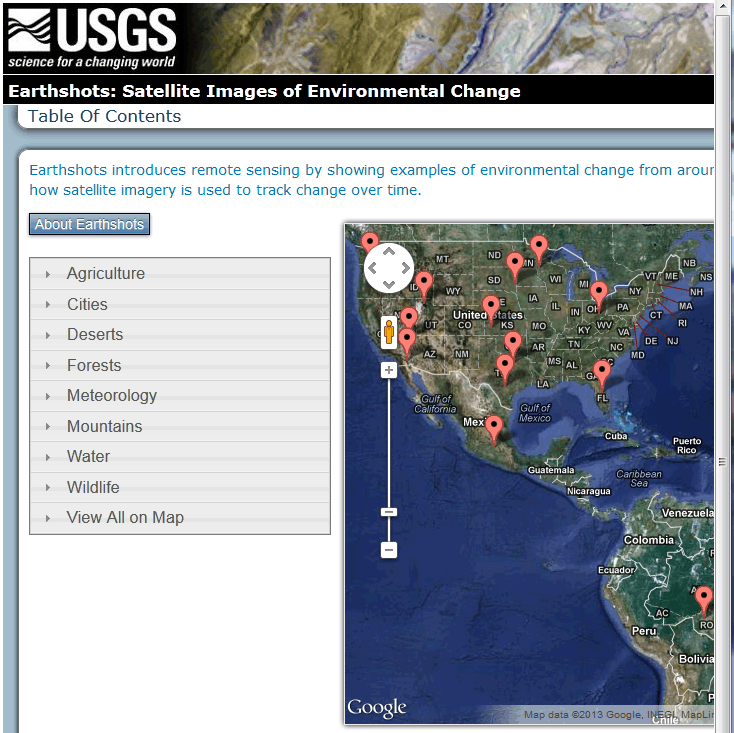
2. Next go to the archived older version of the USGS Earthshots site.
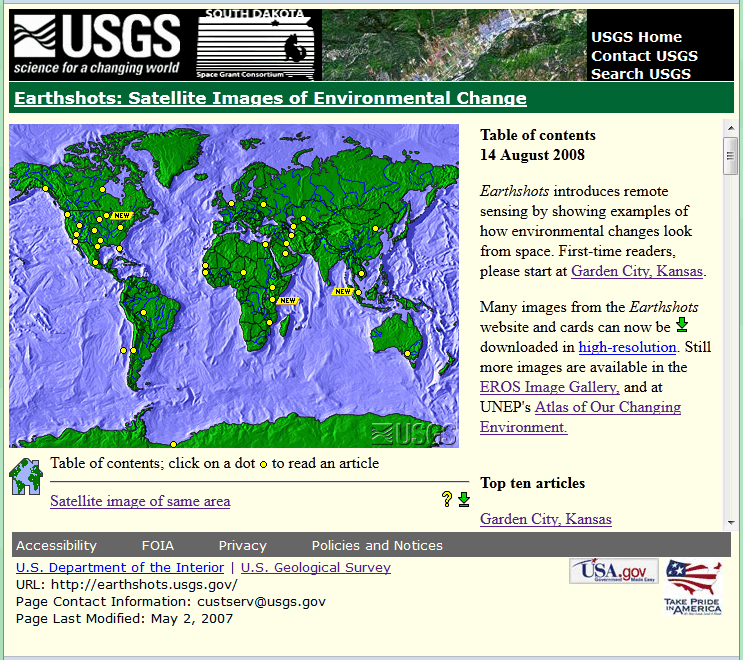
3. View images produced from Landsat data. Follow the link to the Garden City, Kansas example. You'll be presented with an image created from Landsat data of Garden City, Kansas in 1972. By clicking the date link below the lower left corner of the image, you can compare images produced from Landsat data collected in 1972 and 1988.
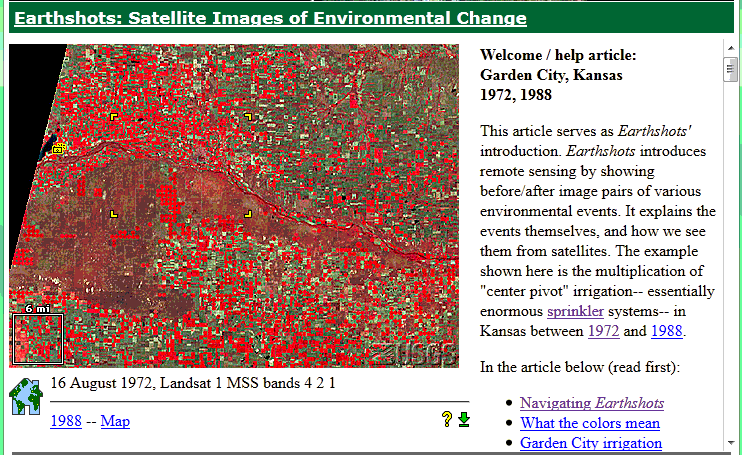
4. Zoom in to a portion of the image. Four yellow corner ticks outline a portion of the image that is linked to a magnified view. Click within the ticks to view the magnified image.
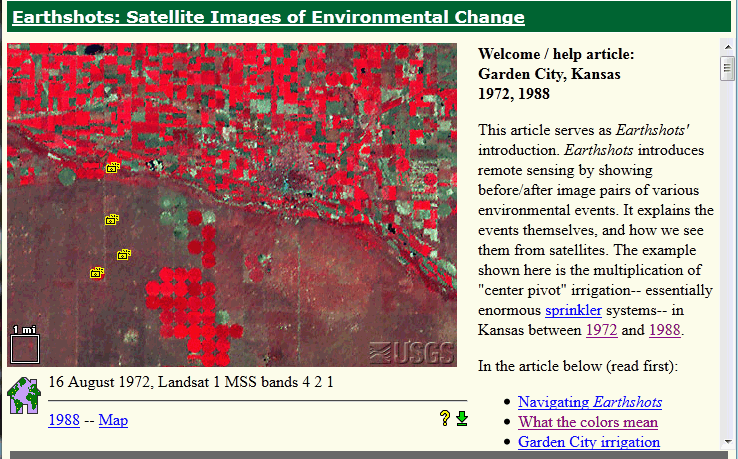
5. View a photograph taken on the ground. Click on one of the little camera icons arranged one above the other in the western quarter of the image. A photograph taken on the ground will appear.
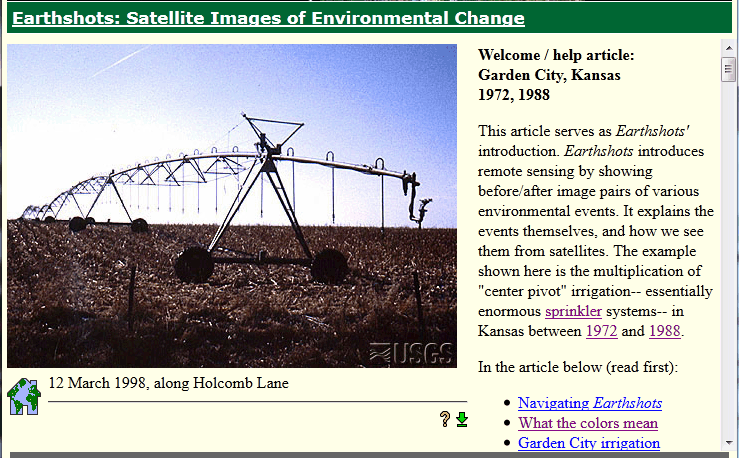
6. Explore articles linked to the example. Find answers to the following questions in the related articles entitled What the colors mean, How images represent Landsat data, MSS and TM bands, and Beyond looking at pictures.
- What is the spectral sensitivity of the Landsat MSS sensor used to captured the image data?
- Which wavelength bands are represented in the image?
- What does the red color signify?
- How was "contrast stretching" used to enhance the images?
- What is the spatial resolution of the MSS data from which the images were produced?
